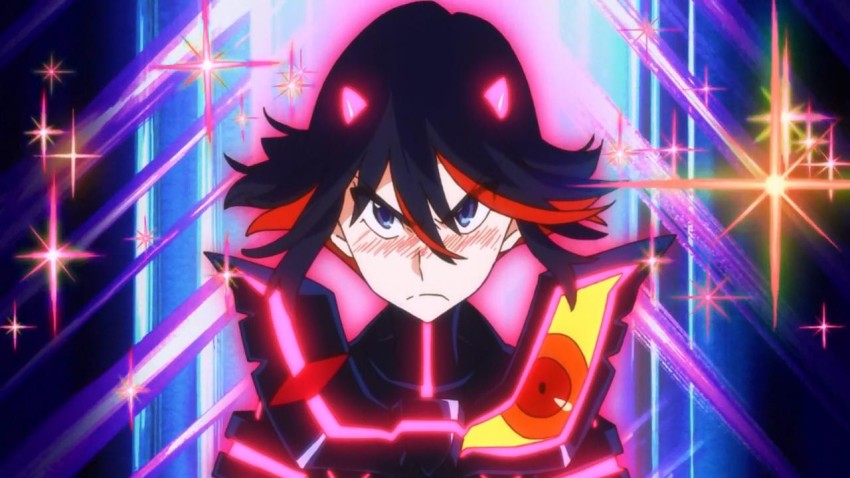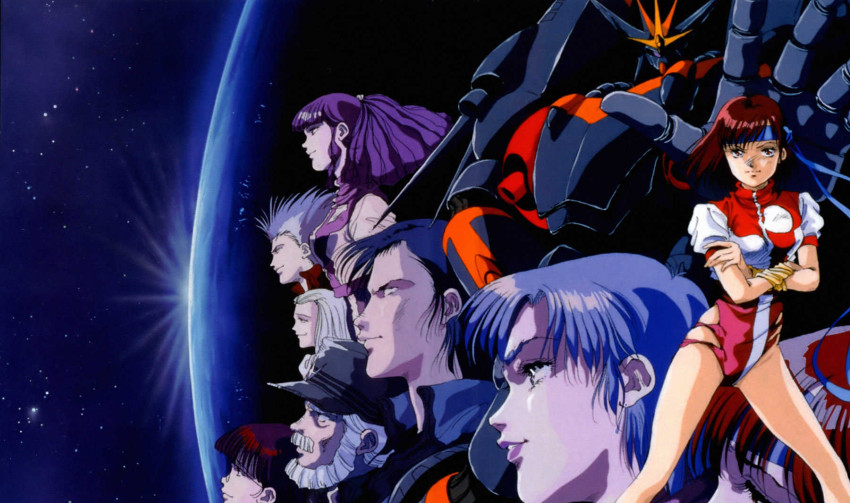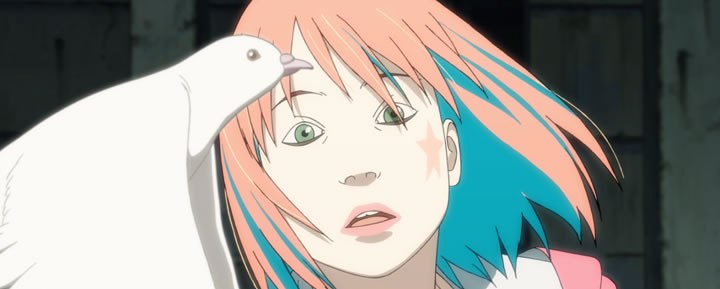Interview: Takeshi Honda
January 1, 2017 · 0 comments
By Andrew Osmond.
 Takeshi Honda is an animator’s animator. When we interviewed Aya Suzuki earlier this year, she highlighted Honda for mastering both ends of the craft: huge, muscular action animation and emotionally subtle human acting. Honda has drawn gigantic, charging Evangelions, and delicately human figures for Satoshi Kon, Mamoru Hosoda and Hayao Miyazaki. “His action is very emotional,” says Suzuki. “I think anime often tends to be a little bit cold, a little bit plastic, whereas his acting is so real.”
Takeshi Honda is an animator’s animator. When we interviewed Aya Suzuki earlier this year, she highlighted Honda for mastering both ends of the craft: huge, muscular action animation and emotionally subtle human acting. Honda has drawn gigantic, charging Evangelions, and delicately human figures for Satoshi Kon, Mamoru Hosoda and Hayao Miyazaki. “His action is very emotional,” says Suzuki. “I think anime often tends to be a little bit cold, a little bit plastic, whereas his acting is so real.”
Honda has contributed fine moments to anime as diverse as Evangelion 2.22, The Boy and the Beast and Perfect Blue… though you may also know him for the outrageous transformation scenes in Kill la Kill. Here’s an NSFW example; Honda said the scenes embarrassed him, but animation director Toshio Ishizaki, professionally called “Sushio,” insisted he take the job.
I interviewed Honda about his career when the master animator visited Britain last October (2017), as Guest of Honour at MCM London Comic Con.
It’s an honour to meet you, Mr Honda. Firstly, can you tell us why you decided to get into animation?
First off, I loved drawing pictures. And my generation (Honda was born in 1968) had the biggest boom in animation. Lupin the Third was there, Gundam was there, Space Battleship Yamato was there. Loads of great anime works came out. I liked drawing, so that was my first choice.
How did you move into animation professionally?
I came from the countryside, from the city of Kanazawa in Ishikawa prefecture. I wanted to be an animator so I thought what do I do? Let’s go to Tokyo; that was the first thing I did. Then I joined Atelier Giga [which largely consisted of breakaway staff from another anime studio, Bebow; many of Giga’s commissions were for sub-contract work on titles by other studios.] Giga was fairly new then, doing various work, mainly for Sunrise anime. Giga also worked on Toei titles, like Transformers; it also worked on Urotsukidoji.
On that note, one of your early credits was apparently on the sex anime series Cream Lemon – did you make that at Giga?
That was after Giga collapsed. It was made by AIC, that was where I was then.
A lot of your work has been at the Gainax studio. Did you go to the 1980s Daicon events in Osaka, which featured animated fan films by the team who would found Gainax?
No, I was still at high school. I did see some of the works and I was quite shocked by them! They all looked very professional, so I was really impressed by that.
How did you join Gainax?
I think it was right after Cream Lemon… I think it was Lemon Angel [a sexy TV series] rather than Cream Lemon, I was doing animation for that. Then I saw a job advert in Animage magazine, and I sent my CV, but I didn’t hear from them for about six months. All of a sudden I got a letter from Gainax for a job interview.
 What was your first work for Gainax?
What was your first work for Gainax?
Gunbuster. I did inbetweening on the first episode or two, and then a hundred shots for the fifth episode.
Another 1990s anime you worked on was the original Bubblegum Crisis video series. In the eighth episode (“Scoop Chase”), you animated a funny action sequence involving a female character, Lisa, in an elevator shaft. Reportedly this sequence boosted your reputation in the industry; is that right?
Yes, probably. But mainly it was because of Takahiro Kishida (an animation director on the Crisis episode), because he just told everybody about this particular story. Ishida saw my drawings and he realised that I don’t really follow the practice that I really should be doing. Hidenori Matsubara (another animation director on the episode) was kind of a big scary figure, but I totally ignored his style and just did it my way. Ishida found that really brave, so he just decided to call me the master.
How was your style different from what you were told to do?
To be more precise, the original character designs were bishojo (pretty girl), designs. However, that particular elevator scene was quite funny, so I decided to go for comical storyboards, rather than (stick to) the actual character design.
Since then, you’ve animated some sequences that look extremely complex, with many background characters and other elements. For example, in the film Perfect Blue, you drew the scene of Mima chasing her phantom ‘double’ through a corridor, crashing off walls and people. More recently, you animated a scene in Hayao Miyazaki’s film The Wind Rises in which the two main characters reunite at a crowded station. How do you go about creating scenes like that?
With Perfect Blue, the director Satoshi Kon did really detailed storyboards, so all I had to do was just add something that was missing at certain points, so it was fairly easy to do. But Wind Rises was very hard… I had to really draw a lot for The Wind Rises, because the depth (of the image) is just so great, we had to have layers and layers of crowds, so that was physically hard.
So you animated all the characters?
Yes, and on top of that I had to design all the costumes. It took at least a week for one shot.
Anime fans praise your attention to human movement, and the movement of fabrics on a human body.
I do make an effort; I do look at my arms and how my shirt looks, with the creases. The kimono is really difficult, how the fabric flows and drops and creases… The Wind Rises was not that difficult, because it’s a bit like a manga really, but animating on Kon’s Millennium Actress was very difficult, just because of the kimonos that the character wears.
Do you ever trace live-action film?
Yes, sometimes. In The Animatrix, we actually shot the live-action just for the main character, the girl, and then I looked at the video and use that.
Do you mean the scene where the robot girl is destroyed in the “Second Renaissance” segment of Animatrix?
No, we didn’t do the live-action there. I’m talking about what Koji Morimoto did [the Animatrix segment called “Beyond.”]
 Obviously, different anime has different levels of realism – who decides the level of realism in a title?
Obviously, different anime has different levels of realism – who decides the level of realism in a title?
Basically, I only follow the director’s orders, but it’s up to me about the realism. I actually spend a lot of time to get the realism.
To take a concrete example, there seems to be a clear difference in realism between your animation in Kon’s Tokyo Godfathers and that in the recent Mamoru Hosoda film, The Boy and the Beast.
Obviously these two films are ten years apart, so it’s just a different time in my life, I suppose. But for Tokyo Godfathers [released 2003], I really wanted to do more ‘real,’ but obviously I had gone past that phase by the time I got to Boy and the Beast [released 2015], so I think I did it more towards “manga” than realism.
Finally, I wanted to ask about your work on the Evangelion franchise. I believe you did the spectacular action sequence in the film Evangelion 2.22, where the Eva starts running and jumping over the city.
** Just when the Eva started running – after that, the layout was done by Masayuki (the director of Evangelion 2.22).
Were you inspired by Olympic sprinters?
No, you can’t quite copy the Olympic athletes, because that would look really stupid in animation. They would look like ‘that’ [Hosoda imitates the motion of sprinters’ arms] and you can’t have a big robot running like that. So I made the robots lean forwards to create the robots actually running fast and going forward.
You also worked on the Evangelion TV series. There are many stories of it being a very troubled, stressful production. Were you aware of this when you worked on the series?
There’s a certain element of reality reflecting onto the works, yes! (laughs) Basically all the characters in Evangelion are either very angry or very depressed, and I could tell you who exactly was angry and depressed then, but I don’t think (the PR people) would want me to tell you who they are.
Andrew Osmond is the author of 100 Animated Feature Films.
Leave a Reply